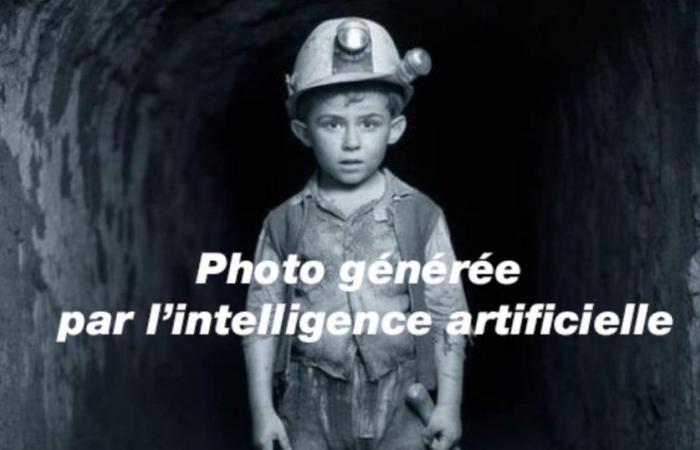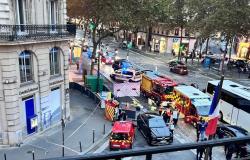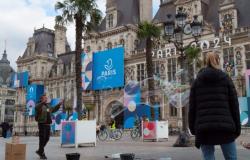Generators of audiences or conspiracy theories, photos generated by AI, ever more spectacular, are multiplying on social networks by banking on the credulity of Internet users.
A mother and her child crying during the Great Depression, an exhausted soldier during the Vietnam War… These photographs relayed on social networks are astonishingly realistic, but they were generated by artificial intelligence (AI). Most often in black and white, so-called historical photos are widely shared by cultural pages, but also by Internet users on their personal accounts, at the risk of skewing the vision of history.
In addition to anonymous figures, they sometimes feature notable personalities, like Theodore Roosevelt in 1898 when he left for Cuba in the middle of the Spanish-American War. Or the Wright brothers, pioneers of aviation, after their first powered flight in 1903.
In the case of the two American engineers, an image generated by an AI, which circulated on Facebook, shows them posing all smiles in front of their plane. Whereas most of the real archive images of the two brothers show them either with a serious air in an austere setting, or in the form of anonymous silhouettes, in the distance, working on their prototype. Why did you produce this fake photo? AFP did not obtain a response from the person who broadcast it, but according to one of the instructions addressed to the AI used, and visible above the image, the objective was to highlight a atmosphere of « celebration ».
Capture Facebook
Read the file
Artificial intelligence: the dawn of a new world
« Fake story »
« AI has caused a tsunami of fake history, especially in the field of images »deplores the Dutch historian Jo Hedwig Teeuwissen, who tracks down false assertions or preconceived ideas about history on social networks, under the pseudonym “Fake history hunter”. « In some cases, these are AI reproductions of archive photos that actually exist. It’s really weird, especially when the originals are very well known », wonders the academic.
Among the creations made on Midjourney artificial intelligence, a series of fake photos reproduces, for example, by modifying them, the famous images of the assassination of Lee Harvey Oswald, the alleged killer of John Fitzgerald Kennedy, by Jack Ruby, on 24 November 1963 in Dallas (United States).
There are also photos on Midjourney purporting to show the explosion of the Hiroshima nuclear bomb on August 6, 1945, the invasion of Prague by Warsaw Pact troops in August 1968, and a representation of the Colosseum at the era of ancient Rome.
The rise of these false archives generated by AI also questions Marina Amaral, an artist specializing in the colorization of old photos, worried about this phenomenon of staging« events too old to have been photographed » or moments in history « poorly documented ».
« The risk is that these false images will be considered true, and that over time this will alter our understanding of history and lessen public trust in (the image) as a source. reliable for studying the past »she believes.
Compositions too perfect
For now, Marina Amaral and Jo Hedwig Teeuwissen believe they are still able to sort the true from the false, thanks to their expertise and certain AI failures: extra fingers, missing details or, on the contrary, too perfect compositions.
On Facebook, several comments from Internet users sarcastically point out the absence of a propeller on the Wright brothers’ plane, in the AI-generated image showing them in front of their plane.
Capture Facebook
These creations cannot compete with certain attributes characteristic of real photos, snapshots of a moment composed of emotions and singular people, judges Marina Amaral.
« They lack the human element, the intention, the reason behind the photographer’s choices. Although visually credible, these images remain hollow »underlines the artist.
Jo Hedwig Teeuwissen also notes that « real photos are taken by real people and there is generally always an element that is not clear, (…) a bad composition » characteristic.
But the historian judges that it is only a « question of time » before historical AI-generated visuals fade into the background, due to the increasing realism of these artificial images. A scenario that she considers « dangerous », because it would amplify the online disinformation to which Internet users are already exposed.






